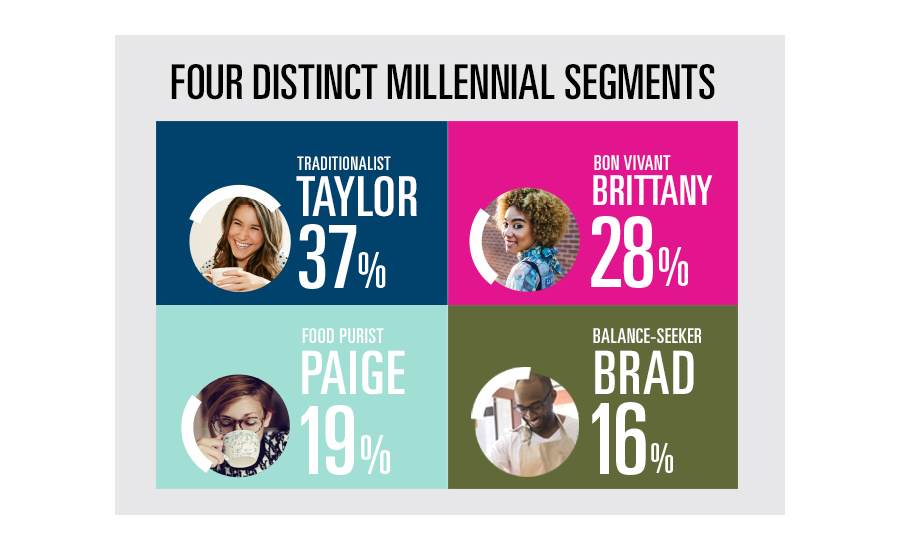Millennials not all the same, study reveals

GenerationWhy, a research study conducted by Ipsos and BuzzFeed and commissioned by the Corn Refiners Association, was released on March 1 during a webcast attended by food and beverage industry decision-makers and influencers.
“Until now, many studies have made sweeping generalizations about millennials,” says Sara Martens, vice president of the MSR Group and GenerationWhy research analyst. “This study picks up where others left off, proving millennials are not a monolith. It provides game-changing insights for food and beverage brands looking to engage with the right millennial segment, at the right time, with the right message.”
The study reveals four distinct segments of millennial consumers, all with different lifestyles, eating preferences and social media behavior:
- Traditionalist Taylor (37% of millennial population) is the least likely to look at nutrition labels regularly. She is more concerned about how food tastes and what it costs than trying new things. She spends the least amount of time on social media.
- Bon Vivant Brittany (23% of millennial population) is most likely to be a “younger” millennial (ages 18-25) and is one of two segments most likely to eat at restaurants. She is least likely to avoid specific foods and ingredients and spends an average amount of time on social media.
- Food Purist Paige (19% of millennial population) is most likely to avoid specific foods and ingredients. While she wants healthier options for her family, taste is a higher priority. She spends an average amount of time on social media.
- Balance-Seeker Brad (16% of millennial population) is most likely to read nutrition labels regularly, with his family in mind. However, he looks at food holistically rather than avoiding specific ingredients. He’s most likely to eat out and spends the most time on social media.
Additional key findings from the segmentation analysis show that:
- Depending on age, millennials have different levels of concern about ingredients and overall health.
- Unlike the general population, millennials who are most influential on social media are not the most extreme in their ingredient attitudes.
- The two millennial segments that dine out most often have very different ingredient attitudes and social media behavior.
In addition to identifying four millennial segments, the study examined eating preferences and social media habits of “older” and “younger” millennials, compared to generation X and baby boomers. Key findings are detailed below:
- Older millennials (ages 26-34) read nutritional labels more than generation X and boomers, whereas younger millennials (ages 18-25) read labels less.
- Younger and older millennials are more concerned about artificial ingredients than sweetener ingredients. Generation X and baby boomers say the opposite.
- Older millennials are the most “health conscious” age group when dining out, compared to younger millennials, generation X and baby boomers.
Across generations and millennial segments, the study found that consumers are still more concerned about total sugars than specific types. Overall, nearly five times as many consumers expressed concern for total sugars over specific ingredients. Even the millennial segment most prone to avoid high fructose corn syrup (HFCS) is nearly seven times (6.8) more likely to avoid total sugars.
“Over the past several years, I’ve observed a common thread in the consumer research around sweeteners, and this study is no different,” says Martens. “At the end of the day, consumers are much more concerned with reducing total sugars than avoiding specific sweetener types.”
Food and beverage manufacturers can receive the full study by signing up for a research presentation at www.CornNaturally.com/GenerationWhy.
Looking for a reprint of this article?
From high-res PDFs to custom plaques, order your copy today!





